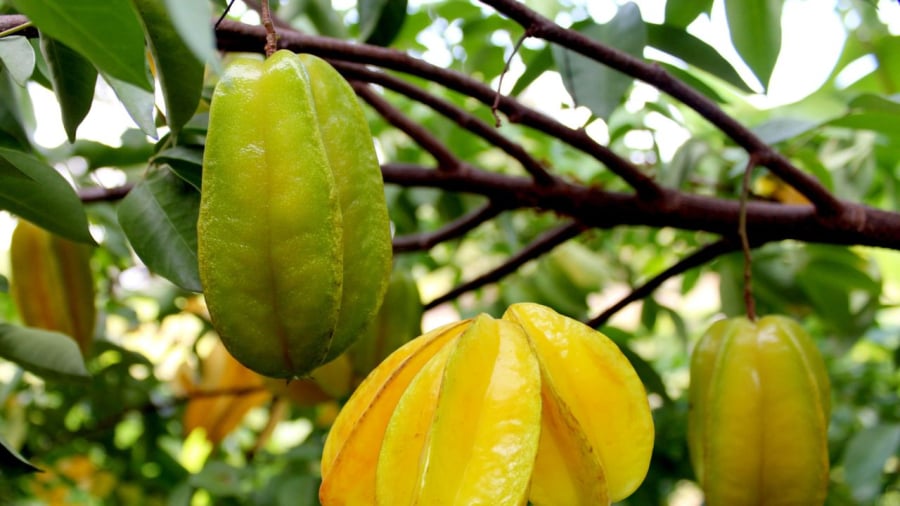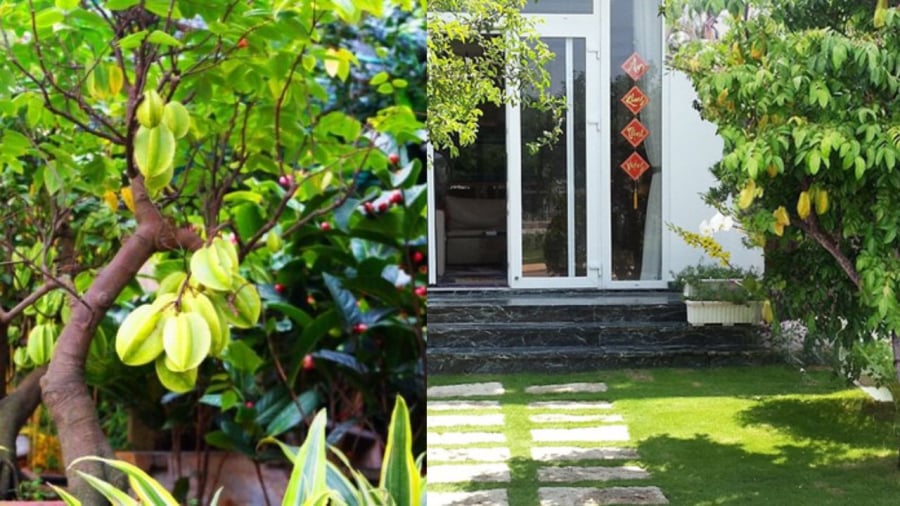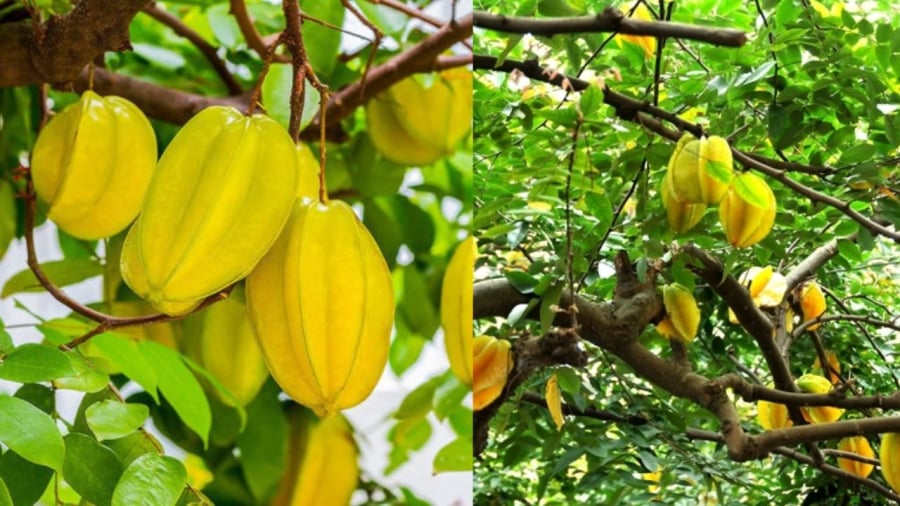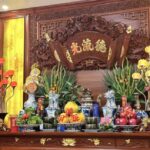The carambola tree, or Khế in Vietnamese, has long been an integral part of Vietnam’s cultural fabric, not just for its rustic charm but also for its profound cultural significance, health benefits, and aesthetic appeal.
Deeply rooted in Vietnamese folklore is the beloved tale of “Eating Carambola, Returning Gold” – a moral fable closely associated with the image of the carambola tree laden with fruit. In this story, the carambola tree symbolizes fairness, justice, and kindness. As such, the carambola has come to embody all that is good, lucky, and virtuous in the Vietnamese way of life.

This familiarity has ensured the carambola tree’s presence in rural gardens and the childhood memories of many generations. The tiny purple flowers and abundant clusters of fruit evoke a sense of abundance, warmth, and hope.
The Carambola Tree in Feng Shui
In the realm of feng shui, the carambola tree is considered a bringer of wealth and good fortune. With its year-round flowering and fruiting, minimal leaf shedding, sturdy trunk, and robust vitality, the carambola tree symbolizes stability, abundant blessings, family prosperity, and harmonious gatherings.
The golden clusters of ripe carambola fruit signify affluence and abundant financial resources. Additionally, the carambola tree is a popular choice for landscaping due to its ease of cultivation, resistance to pests and diseases, and the shade it provides. Many opt to cultivate bonsai carambola trees as aesthetic focal points in their living spaces, imbuing their surroundings with both beauty and auspicious feng shui symbolism.

Feng Shui Elements and Zodiac Compatibility
According to the five elements theory, the carambola tree’s brown trunk, green leaves, and vibrant yellow ripe fruit align with the Earth and Fire elements. This makes it particularly auspicious for individuals with Earth and Fire elemental affiliations. Incorporating the carambola tree into their surroundings is believed to attract positive energy and enhance luck and wealth.
Individuals born in the Chinese zodiac years of the Serpent, Horse, and Rooster are also considered especially fortunate when it comes to the carambola tree.
Moreover, the carambola tree symbolizes benevolence and mindfulness. Planting one in your garden not only provides shade and fruit but also fosters inner peace and encourages virtuous, positive living. Whether you prefer the sweet or sour variety is a matter of personal taste and intended use.
Feng Shui Placement Considerations
While the carambola tree offers numerous feng shui benefits, improper placement can lead to undesirable outcomes. Being a deep-rooted, wide-canopied tree, it should not be planted too close to walls or directly in front of the main entrance, which is believed to be the primary conduit for positive energy and wealth. A large tree obstructing the path, blocking positive energy flow, and hindering light and ventilation is not ideal.

Instead, the ideal locations are the sides or back of the house, the garden, or spacious, open yards. If space is limited, consider planting the carambola in a pot to adorn your porch or balcony. Ensure the pot is appropriately sized—large enough to allow fruit-bearing but not so large that it becomes unwieldy or impedes the flow of positive energy. Remember that potted carambola trees require more meticulous care than their ground-planted counterparts, needing regular watering and periodic fertilization to thrive and bear fruit consistently.
The Carambola Tree in Traditional Medicine
Beyond its cultural and feng shui significance, the carambola tree is also revered for its medicinal properties in traditional medicine. Carambola leaves are known for their cooling properties and are often used to treat boils, rashes, and especially childhood ailments. A bath infused with boiled carambola leaves is a time-honored remedy for skin itching and rashes in infants.
The fruit itself is rich in vitamin C and antioxidants, boosting immunity, aiding digestion, and cooling the body. Sour carambola juice is also used in various remedies to alleviate coughs and detoxify the body.
In conclusion, the carambola tree is not just an iconic fixture in Vietnamese rural landscapes but also a cultural touchstone imbued with profound significance in folklore, feng shui, and traditional medicine. Whether you reside in a bustling city or a tranquil village, incorporating the carambola tree into your living space promises to bring not only lush greenery but also a sense of tranquility and fulfillment.
If you seek a low-maintenance, culturally rich, and health-enhancing addition to your garden or home, look no further than the carambola tree—a true embodiment of Vietnam’s cultural and natural heritage.
Disclaimer: This article is for informational purposes only and does not replace professional advice or services.
“The Ultimate Guide to Propagating Money Trees: 4 Easy Steps to Stronger Roots and Abundant Luck”
The Money Tree is a beautiful plant with a powerful feng shui energy, attracting wealth and prosperity. To ensure its robust health and strong roots, which are believed to bring good fortune wherever it grows, proper care is essential. This article reveals four incredibly simple yet effective tips to foster its long-term growth and vitality.
The Four Items That Bring Fortune: Don’t Toss Them Away, Even When They’re Old and Worn
In feng shui, it is believed that certain objects can bring wealth and prosperity to your home. These four specific items are thought to attract good fortune, and interestingly, the older they are, the more luck they bring! Conversely, newer versions of these very items are thought to deplete positive energy in the home.



































